By Sally Siko

By Sally Siko

Every so often a new bird pops up on the North Carolina rare bird alert which gets my attention.
Even though I’ve seen Snow Buntings before, it’s always a joy to try and go find one year after year when they make their appearance in the Outer Banks.
That’s why I was so excited to spot a pair of these gorgeous birds at the Alligator River NWR this past weekend!
Laying in the grass next to the road, it was thrilling to get a bunch of good portraits of them at such a close range.
Dedicated cold weather birds, Snow Buntings breed in the high Arctic. They nest in the crevices and deep cracks of rocks which provide protection from the Arctic winds.Though their nests are thickly lined with grass, feathers and tufts of fur, due to the extreme cold temperatures the female is unable to leave the nest so her mate is wholly responsible for feeding her while she is incubating the eggs.
It’s a good thing that the females are picky about choosing their mates as their life depends on him caring for at that time.







Often seen with flocks of Longspurs and sparrows, Snow Buntings are using spotted feeding on the ground, foraging for a variety of seeds and buds as well as insects and other small invertebrates, including small marine crustaceans when spending time in coastal areas.This pair spent most of their time either picking at spilled seed along a gravel rd or on the shoulder area hunting for insects in the grass.
The Snow Buntings normal wintertime range extends from southern Canada down to Pennsylvania on the east coast, across the upper Midwest over to western Oregon.They are also an infrequent visitor to the coastal areas of Virginia, Maryland and of course right here in eastern North Carolina too which is pretty neat!Look for them hiding on the low dunes, short grass/ sand flats, and on rock jetty’s and along gravel roads throughout the OBX from now through mid February.
Photos by @sally_siko of @bestlife_birding on my mighty mirrorless monster, the @canonusa #R5
Google Maps pin drop to the Buntings exact location at the Alligator River NWR below…
The neatest thing about birding is that ya never quite know for sure what you’re going to see when you step outside.
Sure, we’ve got our goals and general expectations on hand but each time we head out there is an opportunity to to be surprised and delighted with an unexpected find.
Case in point, this Lark Sparrow that I spotted while leading a trip to the Pea Island NWR this past Sunday.

Up until that point, tbh the birding was less then stellar that day lol. There had been a remarkable lack of bird activity going on so when I first put this bird into focus on my lens it was pretty exciting!
The reason why is because the Lark Sparrow’s range stretches from primarily the Great Plains and west to the California coast. Year-round populations also occur in Texas and northern Mexico.
That being said a very, very small population of Lark Sparrows spend the summer right here in North Carolina too!
Usually those birds are found in isolated spots the Sandhill region of the central part of the state so it was incredibly cool to find one here in the OBX at the beginning of migration.
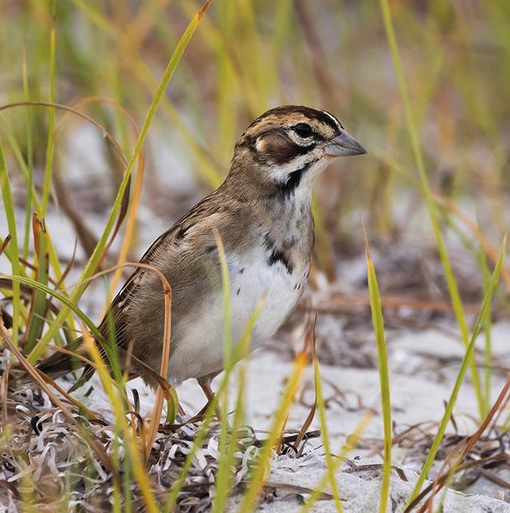
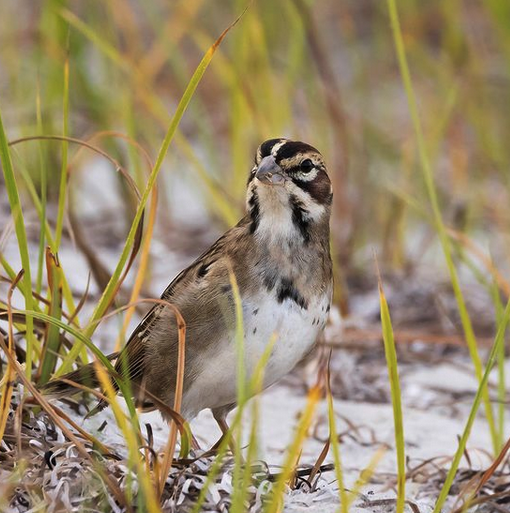


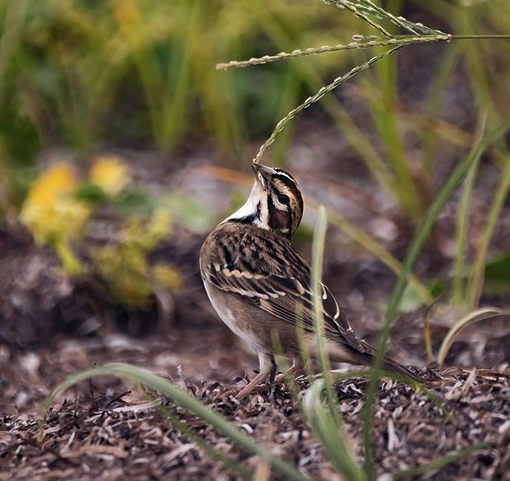
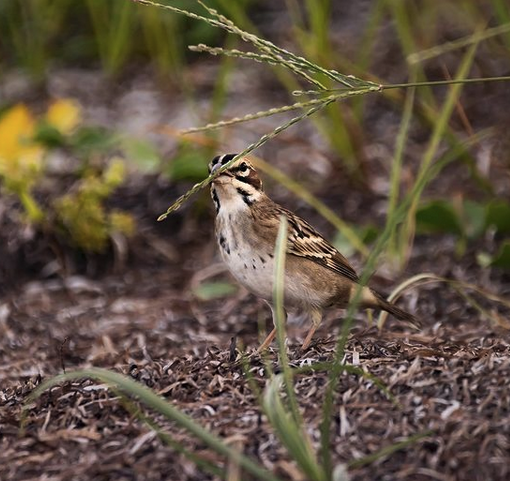
When Lark Sparrows do show up in the eastern counties of NC during the autumn months, they prefer to forage in areas of wide sandy-scrub patches. The dry dunes and field habitats here on Pea Island are just perfect for them.
Unfortunately these beauties won’t be here for much longer as most will head south for the winter in a week or two but if you missed them this year, the Lark Sparrows will return to the Tarheel state next April.
Photos by @sally_siko of @birdwatching_nc on the mighty mirrorless monster of a camera, the @canonusa
#R5
By: Sally Siko- Admin Birdwatching NC
Yesterday I received a rare bird notification from @eBird that a pair of Roseate Spoonbills had been spotted at Lake Lynn in Raleigh NC so I decided to go see if I could get a look at them with my friend Corie @calatta
We met up an hour later in the southern parking lot and walked to the north end of the lake where we were happy to find these beautiful birds hunting for a snack in the shallows with a Little Blue Heron
Nice to get a win so easily!
Roseate Spoonbills are normally found in southern Florida and along the coast of Texas during the summer which is why it was so unusual to find these two at Lake Lynn.
That being said, sightings of Spoonbills here in North Carolina have been on the increase in recent years though most of those have occurred in our southern coastal regions.




These lovely birds are best spotted in marshy areas foraging for a meal in the water or mudflats.
Sweeping their namesake spoon-shaped bill side to side in the shallow water, the Spoonbills mouth is partially open as their bill probes into the mud. When they stir up a fish or invertebrate, they’ll clamp that bill shut to capture their prey.
Their diet mainly consists of minnows, but they’ll also eat shrimp, crayfish, crabs, aquatic insects, mollusks, and slugs. Spoonbills will also snack on plants including the roots and stems of sedges.
I have no idea how long these two will stick around the Triangle for so if you can get out within the next day or two you might be able to find them as well.
For reference, I’ve included a Google Map pin drop showing the exact location of these birds at the north end of Lake Lynn (as of yesterday & today) to the end of this post.
Hope you are able to see them too!
Happy birding!
-Sally
Photos & Video by @sally_siko of @birdwatching_nc on the full frame beast of an SLR, the mighty @canonusa
#5Ds
By the way, check out the video of the Roseate Spoonbills in the Instagram version of this post below!
By: Sally Siko- Admin Birdwatching NC
I set out today to find a rare White-fronted Goose that had been recently reported in the Mid Pines Rd. area of Raleigh North Carolina. Driving along the gravel road , I searched the fields and ponds. But, to no avail. This Goose was nowhere to be found.
Not finding anything interesting, I turned my truck around. Maybe I should check out nearby Yates Mill Park to see if the Goose might turn up there. As I made my way back down the road, a raptor perched on a far away tree caught my eye. I pulled over, grabbed my camera, and hopped out of my truck.
The skies were still pretty dark at this time. It was very difficult to focus my lens on the bird in these lighting conditions. I snapped off three shots. I reviewed the first two in camera and was disappointed with the quality of the images. They were so dark and grainy and absolutely useless for ID purposes.
Feeling deflated, I did not even bother looking at the third photo assuming that it was garbage too. In fact, I almost deleted the photos off of my camera right there and then. Left thumb planted on the trashcan button, for some reason, I hesitated. Something inside me said “look at these photos later”. So, I kept the RAWs anyway.
Standing there in the cold field, I debated weather or not to keep trying to get a better shot of this mystery raptor but ended up deciding to move on with my search for the White-fronted Goose. After all, this bird was really far away and the lighting was not looking like it was going to improve with all of the clouds moving in. Besides, my first thought was that this was likely a Red-Tailed Hawk and I’d have plenty of other (and better) photo opportunities to see one later.
So, off to Yates Mill Park I went. I did not give this encounter a second thought. Especially after how my birding at Yates Mill Park went. Let’s just say that I was not dissappointed. More on that later, stay tuned!
When I got home, I uploaded the photos onto my Mac. I could not believe my eyes! Yes, the first two photos of the mystery raptor were indeed absolute hot digital garbage but that third image… this third shot did not show a Red-tailed Hawk.
No.

It was a freak’n Peregrine Falcon!!!
This is a particularly nice find. You see, up until the 1950’s, Peregrines nested regularly here in North Carolina. Then, they were nearly completely wiped out, almost to the point of extinction. Their rapid disappearance from the eastern U.S., (as well as their decline in areas of the western U.S.) were caused by man-made environmental contaminants, including the pesticide known as DDT.
These pesticides got into the water and were absorbed by insects. Small birds ate the poisoned insects, and became contaminated themselves. Peregrines ate the contaminated small birds, and by now the multiplier effect of the pesticides in the food chain caused concentrations high enough to kill many birds directly. Worse yet, the pesticides interfered with calcification of eggshells, resulting in thin eggshells which were crushed as the parents sat on them during incubation.
In 1970, the U.S. Fish and Wildlife Service listed the Peregrine falcon as an endangered species. Recognizing the effect of DDT, the E.P.A. banned this pesticide from use in the United States back in 1972. Attempts at restoring the peregrine falcon began in 1974 with the first release of captive bred falcons.
The N. C. Wildlife Resources Commission began releases in 1984. Eighty juvenile peregrines had been released in the state by 1991. An additional 12 birds were released in 1996 and 1997 to increase the population in the Southern Appalachian Mountains.
Although the U.S. Fish and Wildlife Service removed the peregrine from the Federal Endangered Species list in 1999, it remains protected under the N.C. Endangered Species law and at the federal level by the Migratory Bird Treaty Act.
Although, the survival of peregrines in N.C. still remains tenuous due to a low rate of successful nests, the species does appear to be recovering (slowly) here in the Tar Heel state through the efforts of the North Carolina Wildlife Resources Commission breeding and nest monitoring programs.
This bird is a lifer for me as I have never photographed a Peregrine in the wild before. I’m absolutely thrilled and am honestly wishing that I could leave right now to go back out to this birding spot to get another crack at photographing this bird. Unfortunately, my family has other plans for the rest of my day.
But, that doesn’t mean that you cant try instead!
Ok, here are the details of where I saw this bird along Mid Pines Rd. Below is the Google maps link to get to the general area…
Here is a screen shot of the exact location where the Peregrine was sighted. I spotted him in the treeline that lines the field to the north-east of the dog-leg.
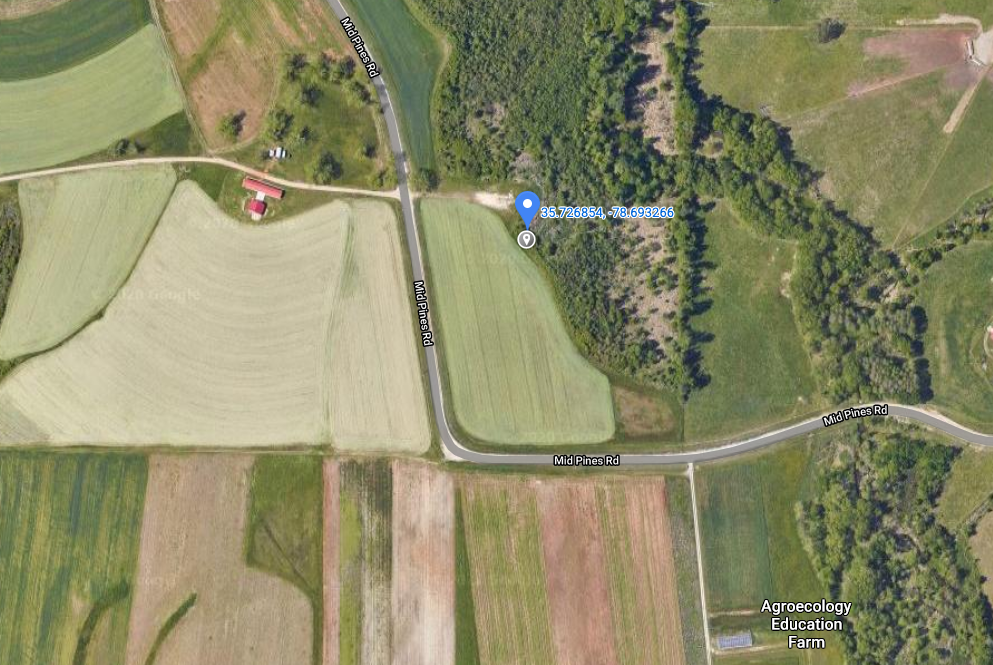
Hope that you get a chance to see and photograph this impressive bird too!
Happy Birding!
-Sally
References: Phil Spivey, Allen Boynton. Updated by Chris Kelly, NCWRC Johnsgard, Paul A. Hawks, Eagles and Falcons of North America (Washington, D.C.: Smithsonian Institution Press, 1991).Ratcliffe, Derek A. The Peregrine Falcon (Vermillion, SD: Buteo Books, 1980).Scott, Shirley L., ed. Field Guide to the Birds of North America (Washington, D.C.: The National Geographic Society, 1987).Terres, John K. The Audubon Society Encyclopedia of North American Birds (New York, N.Y.: Wings Books, 1980
By: Sally Siko- Admin Birdwatching NC
Christmas Bird Count (CBC) season here! Here are a a few thoughts from the eBird website.
“This is a great time to join others to cooperate in an effort across the World to take a snapshot of bird occurrence around the holidays. For 3 weeks each year ( December 14th through January 5th) birders head out to conduct the Audubon Christmas Bird Count. “
Haven’t signed up yet? What are you waiting for! You can join the effort here https://www.audubon.org/conservation/join-christmas-bird-count
“These counts are a cooperative effort to get the most accurate count of birds in a single 15-mile diameter circle based on the reporting of multiple parties of observers within each group. The goal is to arrive at an accurate count total which can be compared to totals for the past 118 years. This data can be used to help understand fluctuations in local and national bird populations.”
If your a eBird user, and plan on logging your circle sightings through the app, here are some helpful resources from eBird to help make sure your birds are counted within your circle properly.
If you’re not an eBird user you can sign up at the link below… https://ebird.org/home
While doing your CBC, eBird Mobile makes it easy to keep your tallies through the day. Here are our tips for making your CBC eBirding as helpful as possible.
Here are some more useful links for eBird best practices and CBC resources:
Happy birding!
-Sally
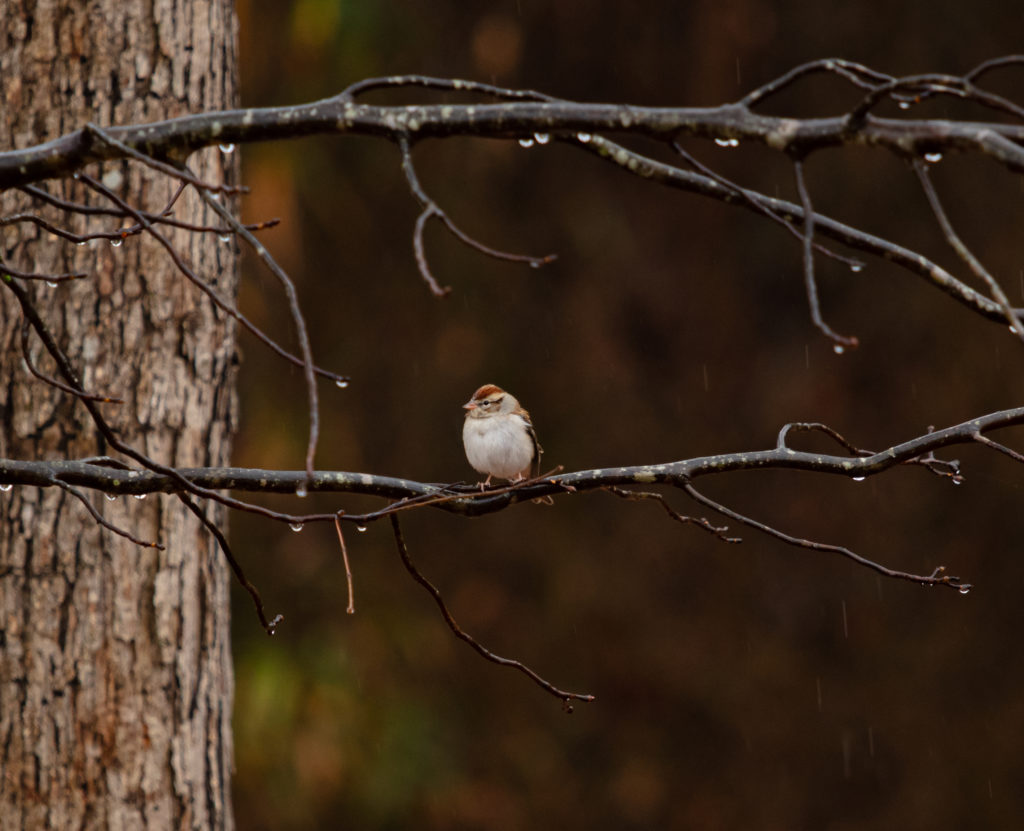
By: Sally Siko- Admin Birdwatching NC
From the Audubon Society website..
“Audubon invites you to celebrate 120 years of the Christmas Bird Count™ with us.
You can help us document this historic year by taking photos during your CBC—the birds you see, the people you meet, the places you explore, the post-count meals you share—and uploading them to this interactive map. We hope thousands of people across the hemisphere will do the same during the count period, giving us a snapshot of how people experience the CBC, from Ecuador to the Arctic, and from Guam to Bermuda. “
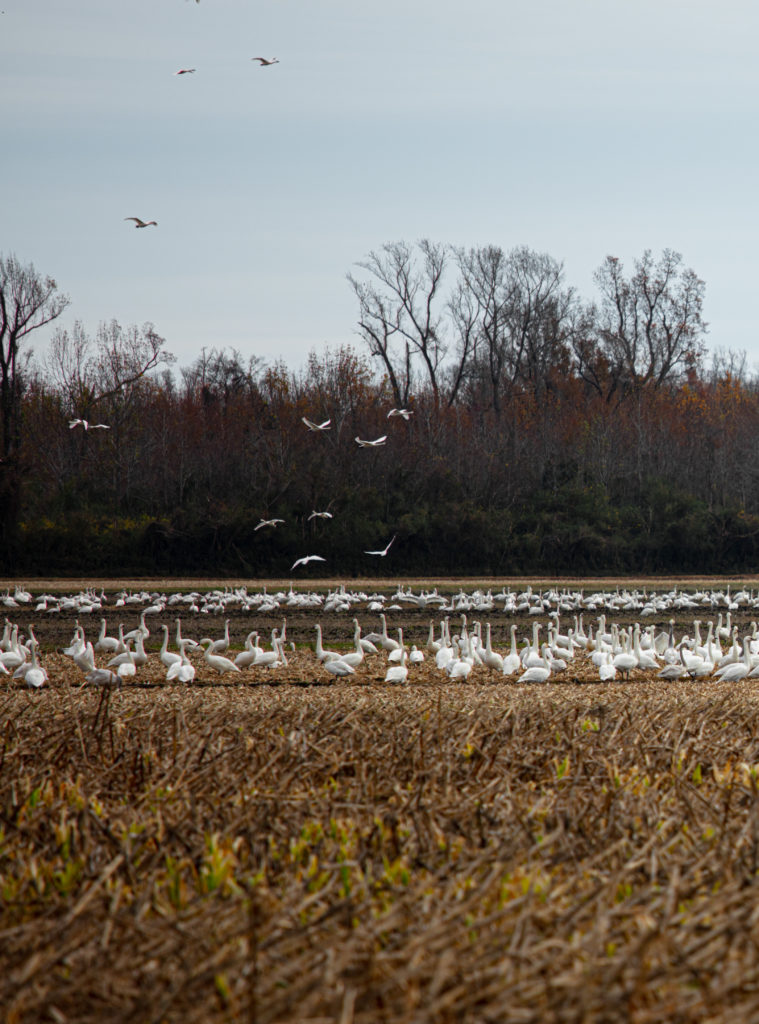

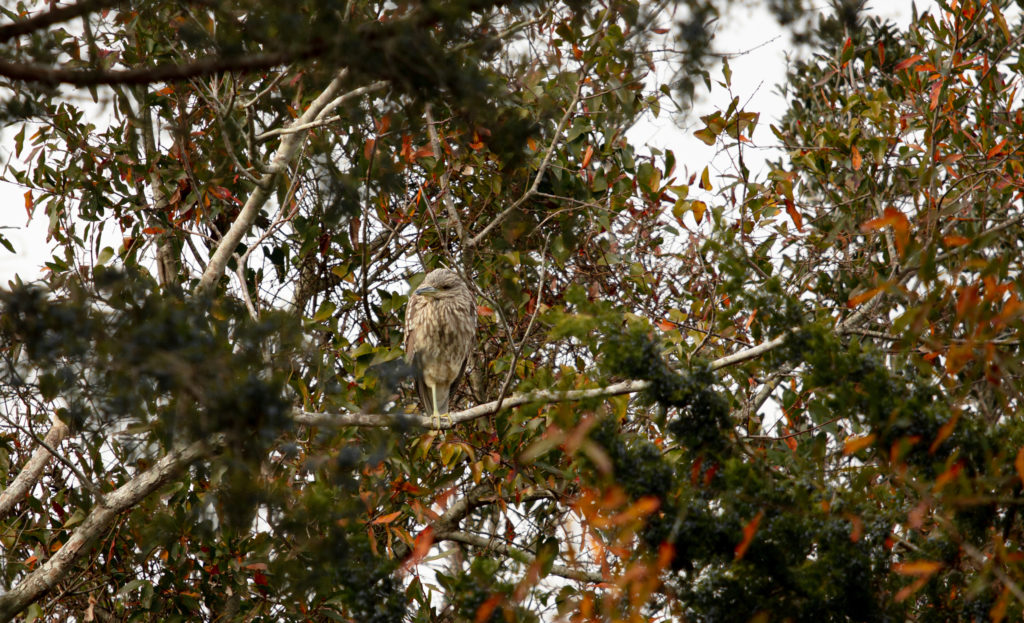

Want to see what other birders here in North Carolina are doing on their Christmas Bird Counts this weekend?
Click on the link below to upload your own photos to the project and see what is going on during the Christmas Bird Count 2019 event.
http://gis.audubon.org/cbclive/
-Sally
By: Dan Gettis
Pungo Unit – Pocosin Lakes NWR
Dates visited: 11/29-11/30
Hello All,
The Holiday season has finally arrived and if you’re like me, you’re excited to use some of the extended weekends around this time of year for birds! Well, Thanksgiving weekend has just passed and other than Thanksgiving day, my calendar was clear. I decided to head out to eastern North Carolina for 2 days. This would be my 3rd 2-day trip out to that part of the state this month, but the 1st time back in 3 weeks.
I was very excited to return in hopes that the Tundra Swans and Snow Geese would be gaining numbers. When I last visited, there were a couple hundred Tundra Swans and a few Snow Geese sprinkled in. They were just starting to flood the impoundments as well.
While the numbers did increase, much to my surprise it wasn’t as big of a difference as I expected. After speaking to a few people there, the refuge management said they are waiting for a certain weed to sprout before they completely fill the impoundments. Apparently this is something the geese and swans love (Widgeon Grass or Pond Weed possibly?). They admitted that it was a “few weeks” behind schedule, as last year at this same time the impoundments were already filled and there were more swans/geese.

11/29
I arrived at North Lake Road (just north of Pungo Lake) Friday morning 11/29 about 45 minutes prior to sunrise. It was supposed to be a nice, clear morning. Well the sun finally came out about 10:30 lol. Within a few minutes, I started seeing the Tundra Swans flying away from Pungo Lake for the day. A number of different groups flew by in about 30 minutes. Anywhere between 2-50 birds at a time. While walking along that road I saw a number of Cardinals, Song Sparrows, White Throated Sparrows and Eastern Phoebe. I decided to head over to the south/east side of the Lake to the Hyde Park area. While there, I spotted a flooded field and noticed about 5-10 Killdeer along with 5-10 Yellowlegs (not sure if Greater or Lesser). I love watching them so I spent about an hour watching and photographing before moving on.
I wanted to head back to North Lake Road area, but on the way I stopped by the Duck Pen Wildlife Trail. It is a ½ mile out-and-back trail with a small blind at the end on the southern part of Pungo Lake. The blind wasn’t a good spot this morning, as the Swans were clear across the other side of the lake, but you could still see tons of them.
While walking the trail, I ran across a nice Great Blue Heron hunting in the canal. I got to observe it for about 15 minutes before it finally flew off.

Heading back to North Lake road, near the impoundment, I notice a large Red Shouldered Hawk. The picture doesn’t do it justice but this was by far the largest Red Shouldered Hawk I’ve ever seen.

Still heading back to North Lake Road, I see a Northern Harrier hunting in an open field.
I arrive back at North Lake Road around 2:00PM. For any wildlife lovers, other than birds there are quite a few black bears in the area as well. As I got out of the truck I see one of the many black bears crossing the road that I’m about to walk down. My excitement increases 😊

I walk about ¾ mile and decided to setup there for the rest of the day.
I see 3 more Northern Harriers hunting in the field in front of me.
A number of Red Bellied Woodpeckers.
I could hear a Pileated Woodpecker but never spotted it.
A cooper’s Hawk briefly flew over.

Right at sunrise, I decided to head back towards the impoundment on the south side of Pungo Lake. At that point, all the Swans and some Geese were starting to fly back in to the lake for the night. It was a beautiful sunset and I was able to get a few silhouetted pics of the swans against the fiery sky.

11/30
I head back to North Lake Road at sunrise and spend the following 10hrs there. Again, all the swans/geese were flying away from the lake for the day. I saw a lot of Red Bellied Woodpeckers. There were 2 Northern Harriers flying around for a couple of hours. And an adult Bald Eagle that likes that area decided to show up as well.
The weather didn’t cooperate as much as I had hoped, but overall it was a great trip and I will be making a return trip out there sometime in December and/or January as well. This is my 1st year birding and I have seen glimpses of how amazing the swans and geese can be, so I cannot wait to see them in full force.
Find Dan Gettis on Facebook https://www.facebook.com/danielsviewphotography/ &
Instagram https://www.instagram.com/28204dan/